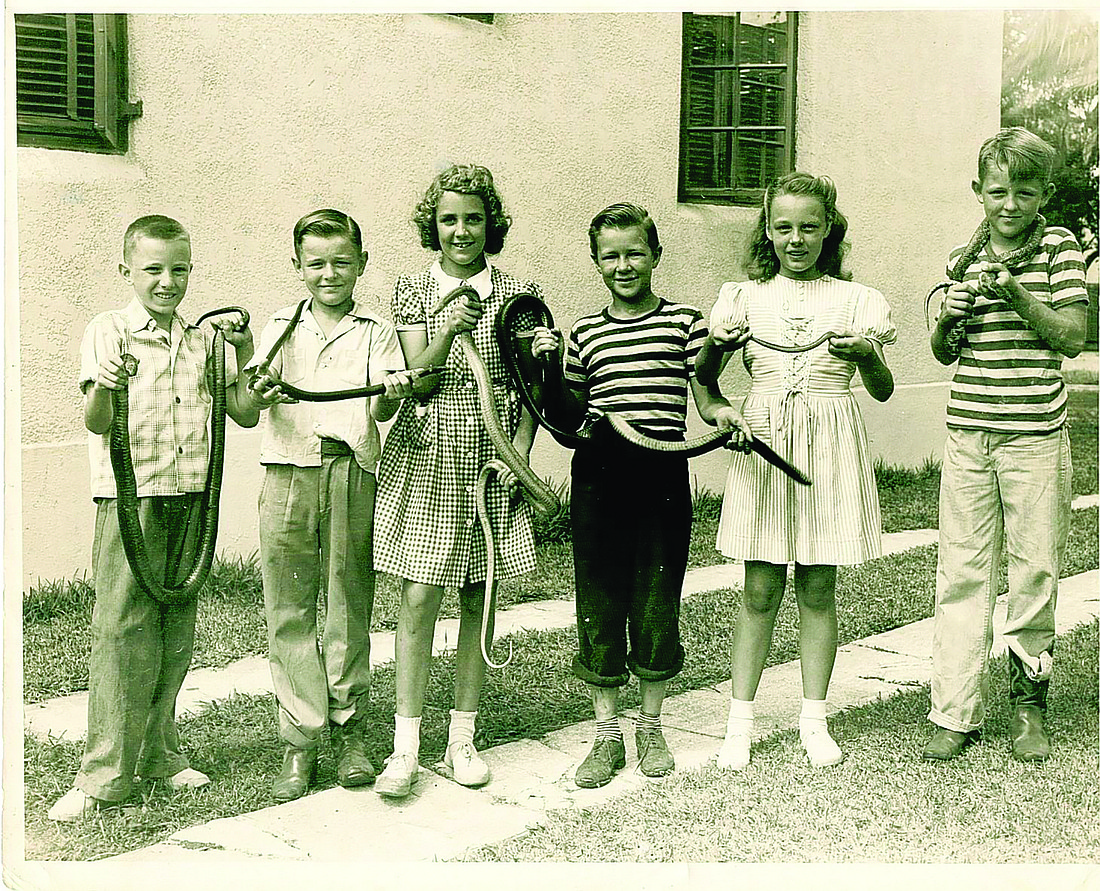- April 25, 2024
-
-
Loading

Loading

Sarasota is known as being the home of such attractions as the Ringling Bros. Barnum & Bailey Circus, the Unconditional Surrender statue and … the Sarasota Snake Club?
The club was started in 1947 when a snake bit a young Sarasota girl, Marie Proctor, while she was waiting for the school bus. Because she did not know what type of snake bit her, doctors gave her anti-venom for a rattlesnake bite, which led to a reaction that resulted in her leg being amputated.
“She was one of the youngest amputees in the country,” says former club member Jill Spelman.
To educate local children about snakes, the Sarasota Snake Club was formed. Price of entry? Your own pet snake. The member with the longest snake became club president.
Spelman was 10 years old at the time and remembers catching her rat snake, Cleopatra, for the club.
“I didn’t think we were unusual; we lived where snakes were,” says former member Sondra Montressor Dicken. “I thought it was a good thing that we were learning like this.”
After a few months, the club began to attract national interest. In 1947, eight members of the club visited New York; they took their snakes along for the ride in hatboxes with holes punched in the top. The club was featured in the New Yorker magazine, and club members — and their snakes — received a free tour of the city and were interviewed on the famous radio show “We the People.”
One of the more unforgettable moments of the trips was when the maids at the New York hotel where the club was staying unknowingly walked into the bathroom where the snakes were kept in the bathtub.
After a year or so members started to move away or attend new schools. Some snakes were released back into the wild; others died. Now in their adolescence, the members became more interested in dating than in the snakes, Spelman remembers.
Looking back, both members say the club was a once-in-a-lifetime experience. However, Spelman says although at the time club was exciting, she thinks the club was more of a publicity stunt set up by its founder, Ray Krimm.
“We wouldn’t have ever done any of it had he not set it up,” Spelman says. “He had clever ideas, like racing the snakes (in Payne Park) and taking a picture.”
One of the photos Krimm took of the children, which Spelman says was staged, became a famous postcard — it shows the children sitting at a soda fountain counter with their pet snakes.
Dicken, however, never thought of the club as a publicity stunt. She remembers it as a learning experience.
“I’m so happy that it happened,” Dicken says. “I mean, how many children in that era get to do something like that? I just thought it was a nice thing we could do; a fun thing we could do, something special.”